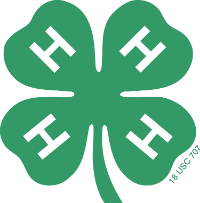Crochet
4HDL24
PROJECT GUIDELINES |
Project Objective
Welcome to the Montana 4-H Crochet Project! This project is designed to encourage creativeness and to fit the needs of each individual member. Members will complete a Montana 4-H Non-Animal Project Recordto record their learning activities and experiences. Project requirements are outlined below. Members are allowed up to three years to complete a project level.
Additionally, members are also encouraged to share their project knowledge with others, such as at county fair project interview or a presentation at a club meeting.
Project Requirements
The 4-H Crocheting project is divided into three levels: Beginner, Intermediate and Advanced. Skills to learn and suggested articles to make are below. To complete a project year, a member must create three articles. Use the book, Crochet Made Easy, as outlined in the Montana 4-H Clover Project Selection Guide.
Beginner: Phase 1 & 2
Phase |
Skills to Learn |
Other Topics
|
Suggested
|
Suggested Fair Exhibit Projects |
|---|---|---|---|---|
1 |
Winding and joining yarn Reading and understanding a pattern. Chain stitch, single crochet double crochet, slip stitch. Increasing, decreasing (if pattern calls for it). |
Crocheting tools Crocheting terms Different yarns, threads Gauge and tension Blocking, laundering and caring for crocheted articles |
Three or more articles using skills learned:
|
One article showing one or more skills learned:
|
2 |
Understanding more advanced pattern instructions. Attaching yarn of another color. Treble crochet, double treble, v-stitch. Crocheting in rounds; increasing, decreasing (if pattern calls for it). |
New crochet terms. More about yarns, threads. More about tension, gauge. Achieving textures by varying stitches. |
Two small or one large article(s) using skills learned:
|
One article showing one or more of the following stitches or skills:
|
Intermediate: Phase 3
Phase |
Skills to Learn |
Other Topics
|
Suggested Articles to Create |
Fair Exhibit Projects |
|---|---|---|---|---|
3 |
Increasing, decreasing stitches Learn at least two of the following:
|
More about types and sizes of yarns, textures Using an interchangeable yarn chart New crochet terms Fit of apparel articles Experiment with at least four different types of yarn and thread (from rug yarn to bedspread cotton). Review of Phases 1-2 to help develop additional skills. |
Two small or one large article(s) using skills learned:
|
One article showing one or more of the stitches or techniques outlined under “Skills to Learn” for this phase. |
Advanced: Phase 4
Phase |
Skills to Learn |
Other Topics
|
Suggested Articles to Create |
Fair Exhibit Projects |
|---|---|---|---|---|
4 |
Research and learn about unique stitches not found in Crochet Made Easy, such as:
Research and learn techniques, such as:
|
How to adapt for different size yarn Selecting different types of yarn or thread suitable for a pattern Charting Join a crocheting group Research new patterns |
Two small or one large article(s) using skills learned, such as:
|
One article showing one or more of the stitches or techniques outlined under “Skills to Learn” for this phase. |
In addition to this guide, please use the following resources:
My 4-H Year Record Book(1/member per 4-H year)
Non-Animal Project Journal & Financial Record(1/project per 4-H year)
Date of Publication: October 2017
Information courtesy of: Oregon State University 4-H Crocheting Project Member Guide, Published August 2008

